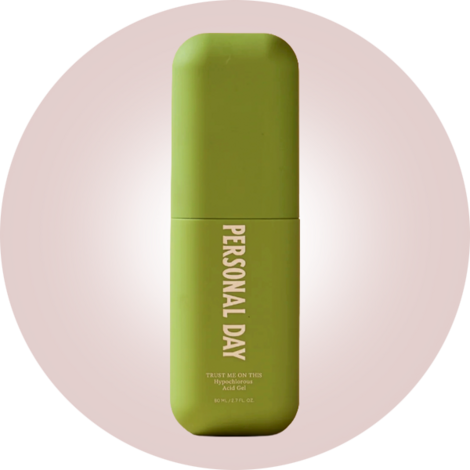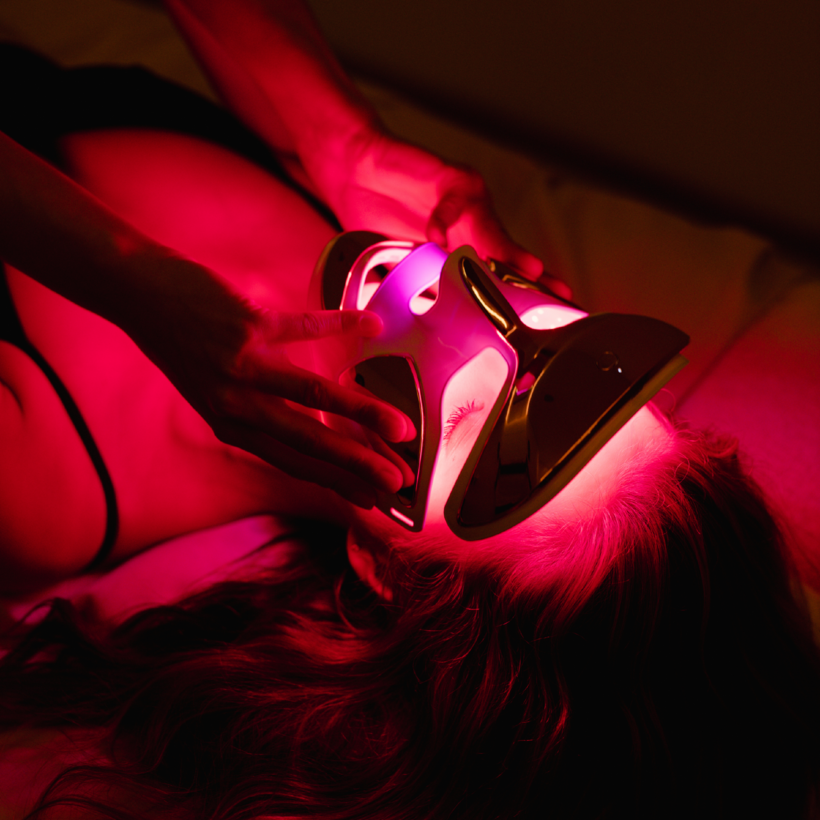The shiny gold face looks like it’s grinning but in a sinister way. It is lineless and poreless with plump cheeks, a pointed chin, and a thin upper lip. It might be mocking me.
Yeah, it’s definitely mocking me. Because this particular L.E.D. mask from MZ Skin costs $670. The silicone variation, also from MZ Skin, might be easier to wear, according to a saleswoman at my neighborhood beauty boutique, because it molds more comfortably to the face. It’s more difficult to purchase, though, at $950.
They all look like bargain-basement deals compared with the Lyma Laser, a $2,695 wand that was named a Best Invention of 2023 by Time magazine.
Apparently, Time didn’t consult Dr. Tina Alster, a board-certified dermatologist in Washington, D.C., before compiling its list. Dr. Alster specializes in lasers and has a few opinions about the Lyma. Here’s one: “I just roll my eyes,” she tells me. “I’m not convinced.” And: “I can’t even figure out what it is.” She tried to warm to the device, she really did. “I took it out of the box. I read everything. It’s nicely packaged.” But her blunt conclusion is: “I think it’s a waste.”
She gave it to a friend, as one does with things one believes are wastes. This friend happens to be French, and perhaps that explains something. “She’ll spend all day faisant sa toilette,” says Dr. Alster. While this Frenchwoman is translating things on her laptop for people at the World Bank, she multi-tasks. Who wouldn’t? Lyma Laser in one hand and the fate of the French-to-English financial world in the other, she diligently zaps her face. The device must be held directly on the skin for three minutes at a time, then moved to the next spot, and so forth, a process that can take about 15 minutes. “I don’t know anybody else who would do that,” says Dr. Alster. (It should be noted that the F.D.A.-approved Lyma Laser has plenty of defenders, including some dermatologists, who say it can visibly improve the skin.)
Jonah Shacknai nominates Simone Biles to the task, because “that handheld device is ridiculous unless you’re a gymnast. It requires 20 minutes of intense, consistent exposure to do anything.” Shacknai is no slouch; he founded Medicis Pharmaceutical, co-founded Skinbetter Science, and is now the chief strategy officer at L’Oréal Dermatologic Beauty. “People tend to circulate these machines around their face like a Sonicare toothbrush, and that’s not going to do anything.” What’s more, “home devices are underpowered and the light wavelength is weak.” Only when he saw one L.E.D. mask at a Halloween party did he approve.
Don’t tell that to the many people who are snapping up these gizmos. Sales of light-therapy devices are up 61 percent so far this year, according to Marissa Guyduy of Circana, a market-research firm. All you have to do is open TikTok and you’ll see: they’re everywhere.
My friend Holly straps on her Dr. Dennis Gross L.E.D. mask every day. “I pop it on after a workout and shower,” she says. It takes nine minutes for her to power through all three light settings. “Psychologically, it makes me believe I’ve done the most I can do for my skin.” If she misses a day, “I’m sad,” she says. Shacknai understands that mindset. “People want to believe in these devices. There’s something about active participation that makes them feel productive.”
She tried to warm to the device, she really did. “I took it out of the box. I read everything. It’s nicely packaged.” But her blunt conclusion is: “I think it’s a waste.”
The operative word is “active,” because these tools require dedication. For Lyma, that’s seven days a week for the first three months. Machines that strap to your face and allow you the freedom to work on your computer, make dinner, or read the instruction manual for lasers are more user-friendly than those that are handheld or require you to lie mummy-like beneath their cocoon of light.
The experts I spoke with aren’t saying L.E.D. and laser lights are useless. “If there’s enough density of the bulbs and intensity of the light, then intense exposure very close to the skin at the right wavelength results in mitochondrial regeneration,” says Shacknai. Translation: That’s good. “But the home devices don’t have that.” What they can do is reduce redness and inflammation, and the blue-light setting can zap acne-causing bacteria effectively, Shacknai says.
After the initial excitement wears off—say, on January 3—these tools might find a home under the sink next to the ancient Clarisonic face brush. The motorized cleansing machine was all the rage in the mid-2010s until users found it too abrasive, too boring, or both. In 2020, L’Oréal, which acquired the brand in 2011, laid it to rest.
Some experts are not giving up as they tinker away at better, easier, and more effective skin devices. Dr. Ellen Marmur, a board-certified dermatologist, designed one that’s a relative breeze. MMSphere is the size of a vinyl record and can sit on a table pointing at your face while you go about your business—as long as your business is no more than 24 inches away from the device. Her smaller MMSphere2Go costs $395 and can clip on a car visor. Dr. Marmur tested the machine on a small group with the light aimed at just one side of their faces for 20 minutes three times a week. After six weeks, she took skin biopsies of the untreated and treated sides and discovered that the light-exposed area had increases in collagen and decreases in inflammation and oxidation. “It’s like all the best things you could ever want for anti-aging,” she says, modestly. Dr. Marmur has presented her results at two medical meetings and is working on a larger study.
Some people regard home light machines as adjuncts to the bigger guns, wearing them between visits to the dermatologist for Fraxel, CO2, or the aptly named GentleWaves lasers or light treatments in hopes of extending their benefits. In a universe where the sane and the skin-obsessed avoid the sun, perhaps these devices are a substitute for seeing the (UVA and UVB) light. And no doctor would roll her eyes at that.
Linda Wells is the Editor at Air Mail Look





